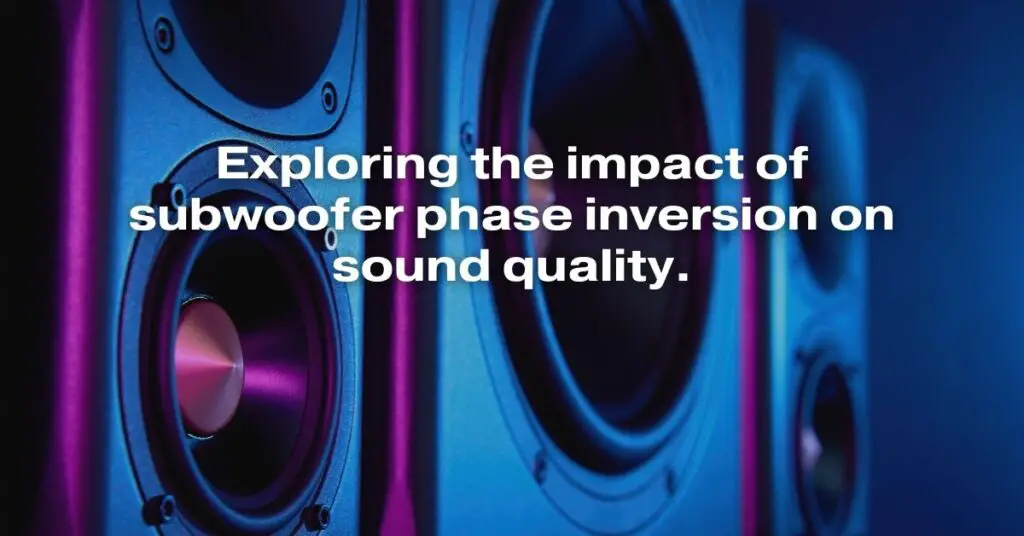In the realm of audio reproduction, achieving accurate and impactful bass performance is crucial for an immersive listening experience. Subwoofers, the dedicated speakers responsible for reproducing low-frequency sounds, play a pivotal role in this endeavor. However, improper subwoofer integration can lead to a myriad of sonic issues, one of which is phase inversion. This article delves into the intricacies of subwoofer phase inversion and its profound impact on sound quality.
Understanding Subwoofer Phase
Phase, a fundamental concept in acoustics, refers to the timing relationship between two or more sound waves. When waves are in phase, their peaks and troughs align, resulting in a cohesive and reinforced sound. Conversely, when waves are out of phase, their peaks and troughs clash, leading to cancellation and a weakened, muddled sound.
In the context of subwoofers, phase alignment with the main speakers is paramount for achieving a seamless and impactful bass response. When the subwoofer is in phase with the main speakers, the low-frequency waves produced by both seamlessly blend, creating a unified and powerful bass foundation. However, if the subwoofer is out of phase, the low-frequency waves clash, resulting in cancellation and a noticeably weaker bass output.
Phase Inversion and Its Effects
Phase inversion, also known as polarity reversal, occurs when the subwoofer’s output is flipped 180 degrees relative to the main speakers. This essentially means that the subwoofer’s cone is moving in the opposite direction to the main speakers’ cones for the same sound wave.
The consequences of phase inversion are detrimental to sound quality. The most immediate effect is a significant reduction in bass output. As the subwoofer’s waves clash with those of the main speakers, they cancel each other out, leading to a thin and underwhelming bass response.
Furthermore, phase inversion can cause a loss of clarity and definition in the overall soundstage. The cancellation of low-frequency waves can muddy the sound, making it difficult to distinguish individual instruments and vocals. Additionally, the bass may sound uneven and inconsistent across different listening positions in the room.
Identifying and Correcting Phase Inversion
Fortunately, identifying and correcting subwoofer phase inversion is a relatively straightforward process. Most subwoofers come equipped with a phase switch, allowing users to toggle between 0 and 180 degrees. To determine the correct phase setting, one can perform a simple listening test.
Play a familiar bass-heavy track and switch the subwoofer’s phase between 0 and 180 degrees. The setting that produces the most impactful and consistent bass response is the correct one. Alternatively, one can use a test tone generator to generate a low-frequency tone and adjust the phase until the bass is at its loudest.
Conclusion
Subwoofer phase inversion can significantly degrade sound quality, resulting in weak bass, loss of clarity, and an uneven soundstage. Understanding the concept of phase and its impact on audio reproduction is crucial for achieving optimal sound quality. By ensuring that the subwoofer is in phase with the main speakers, listeners can enjoy a cohesive, impactful, and immersive listening experience.


